Abstract
A multiply auxotrophic strain, hOG45, was derived from Candida albicans ATCC 10261. Prototrophic revertants of this multiple auxotroph were selected after mutagenesis. These prototrophic revertants were distinguishable from the original prototroph, ATCC 10261, because of their mitotic instability. They gave rise to auxotrophic derivatives which displayed one or more of the auxotrophic requirements characteristic of hOG45. Two of the auxotrophic requirements, those for adenine and methionine, frequently reappeared together in the auxotrophic derivatives of the prototrophic revertants. This apparent linkage of ade and met was confirmed by protoplast fusion analysis of the original auxotroph. These data indicate that C. albicans ATCC 10261 is diploid, the multiple auxotroph h0G45 is homozygous for recessive auxotrophic alleles, the prototrophic revertants are multiple heterozygotes, the auxotrophic derivatives are homozygotes produced by mitotic crossing-over, and the association between the ade and met alleles is due to linkage.
Full text
PDF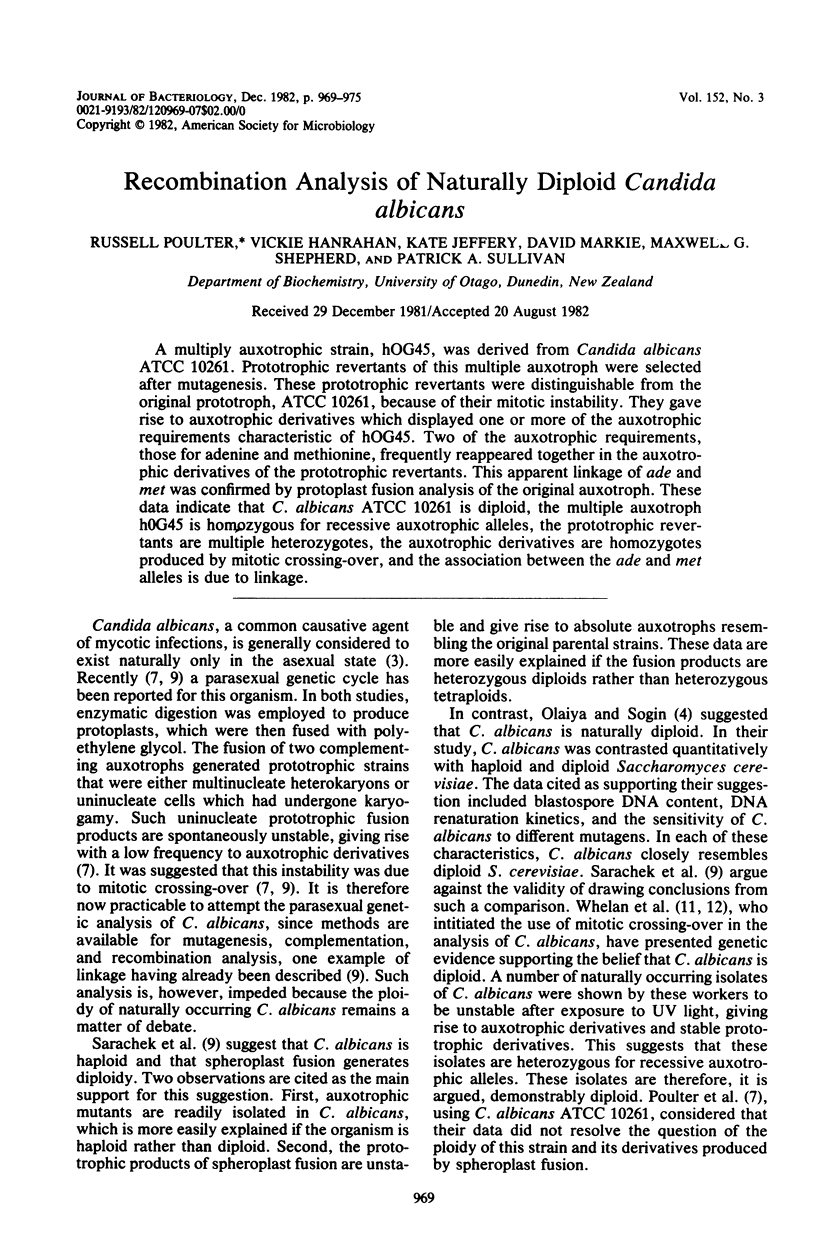
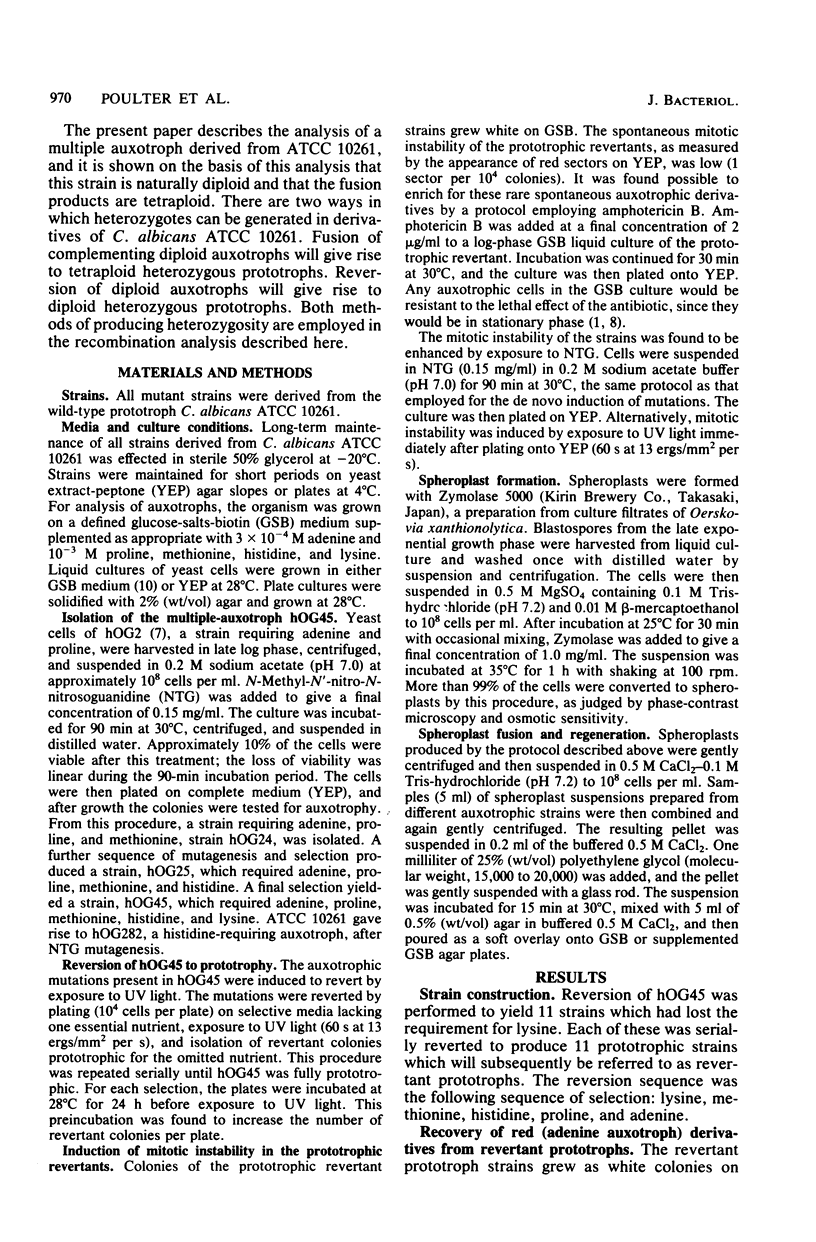
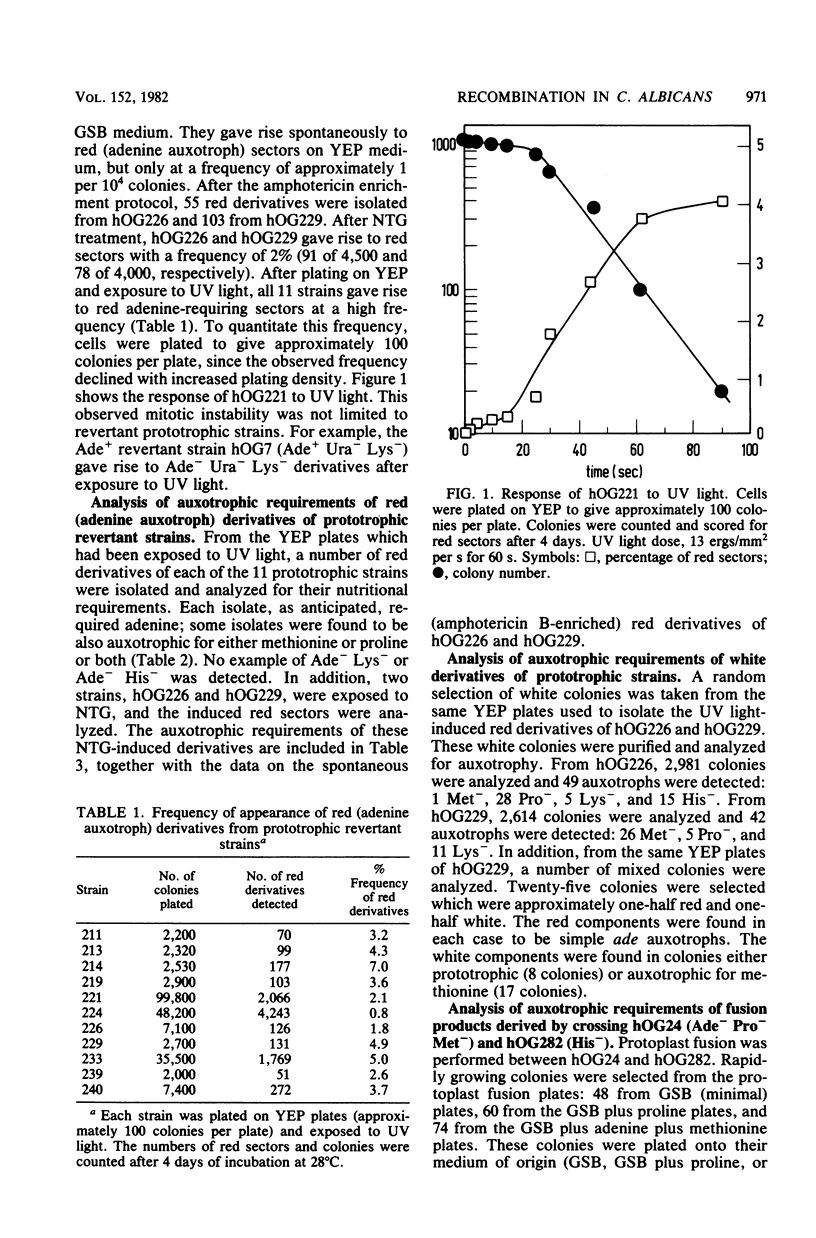
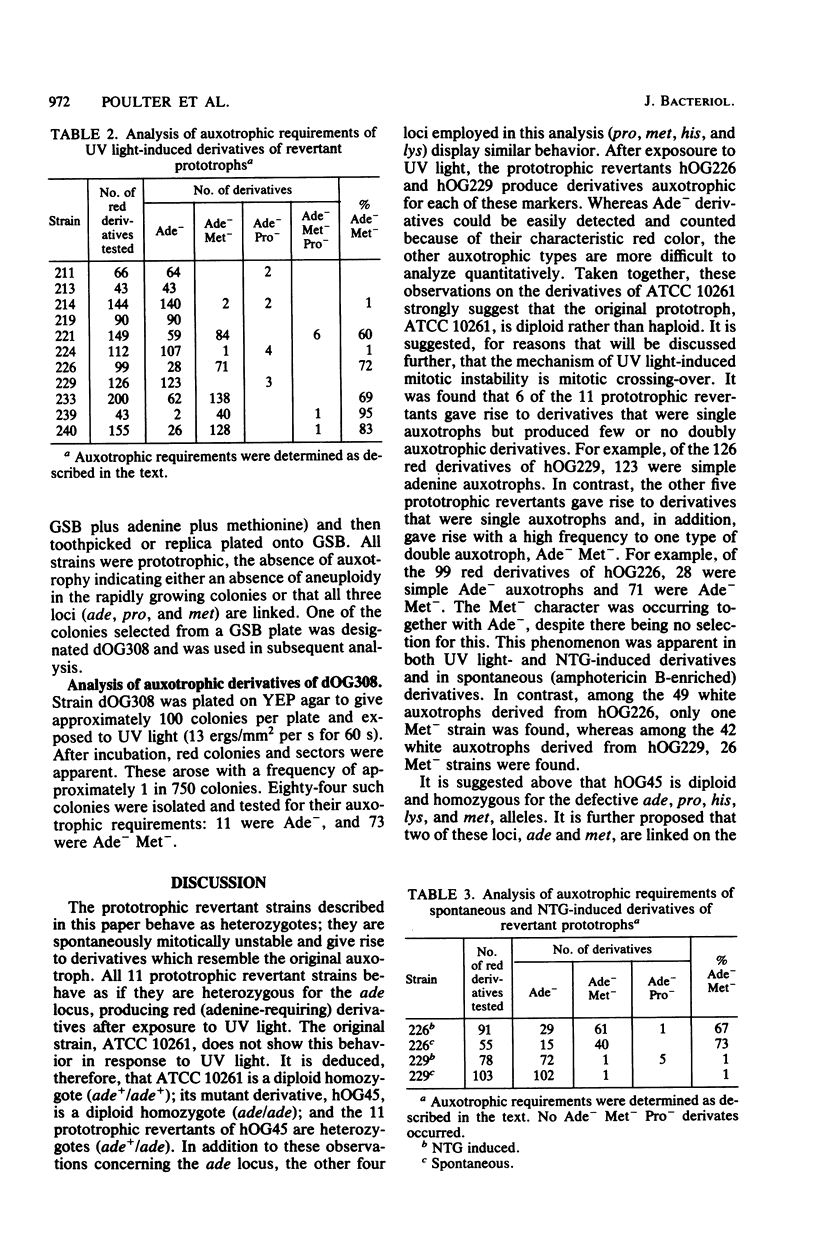
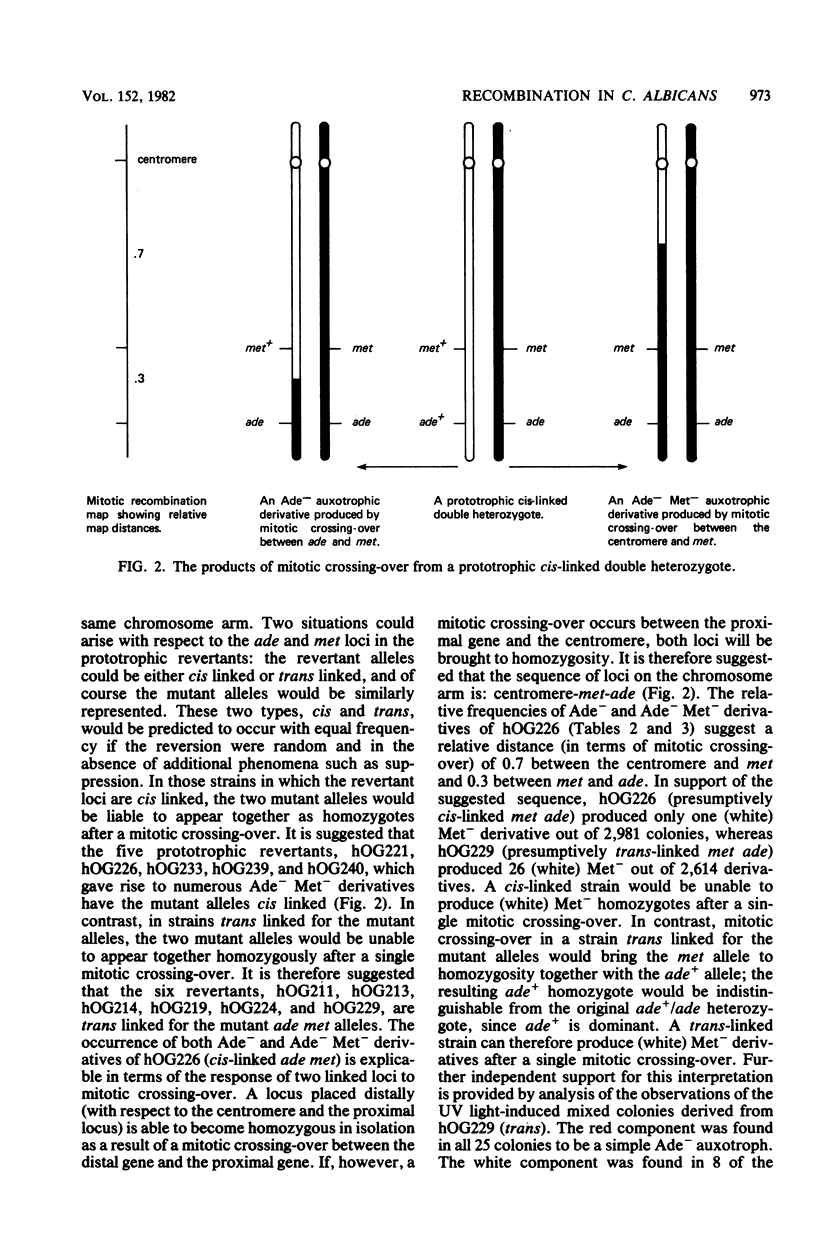

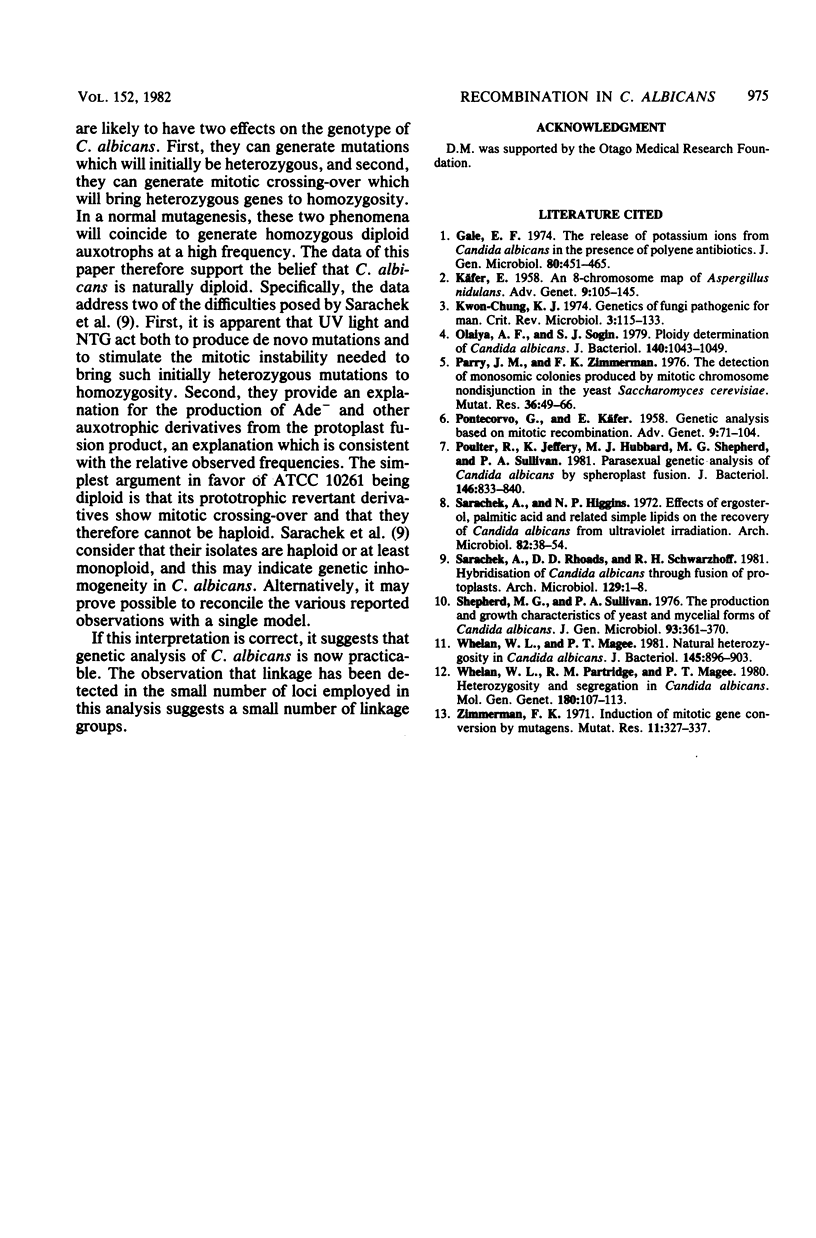
Selected References
These references are in PubMed. This may not be the complete list of references from this article.
- Gale E. F. The release of potassium ions from Candida albicans in the presence of polyene antibiotics. J Gen Microbiol. 1974 Feb;80(2):451–465. doi: 10.1099/00221287-80-2-451. [DOI] [PubMed] [Google Scholar]
- KAFER E. An 8-chromosome map of Aspergillus nidulans. Adv Genet. 1958;9:105–145. [PubMed] [Google Scholar]
- Olaiya A. F., Sogin S. J. Ploidy determination of Canadida albicans. J Bacteriol. 1979 Dec;140(3):1043–1049. doi: 10.1128/jb.140.3.1043-1049.1979. [DOI] [PMC free article] [PubMed] [Google Scholar]
- PONTECORVO G., KAFER E. Genetic analysis based on mitotic recombination. Adv Genet. 1958;9:71–104. [PubMed] [Google Scholar]
- Parry J. M., Zimmerman F. K. The detection of monosomic colonies produced by mitotic chromosome non-disjunction in the yeast Saccharomyces cerevisiae. Mutat Res. 1976 Jul;36(1):49–66. doi: 10.1016/0027-5107(76)90020-8. [DOI] [PubMed] [Google Scholar]
- Poulter R., Jeffery K., Hubbard M. J., Shepherd M. G., Sullivan P. A. Parasexual genetic analysis of Candida albicans by spheroplast fusion. J Bacteriol. 1981 Jun;146(3):833–840. doi: 10.1128/jb.146.3.833-840.1981. [DOI] [PMC free article] [PubMed] [Google Scholar]
- Sarachek A., Higgins N. P. Effects of ergosterol, palmitic acid and related simple lipids on the recovery of Candida albicans from ultraviolet irradiation. Arch Mikrobiol. 1972;82(1):38–54. doi: 10.1007/BF00424928. [DOI] [PubMed] [Google Scholar]
- Sarachek A., Rhoads D. D., Schwarzhoff R. H. Hybridization of Candida albicans through fusion of protoplasts. Arch Microbiol. 1981 Mar;129(1):1–8. doi: 10.1007/BF00417169. [DOI] [PubMed] [Google Scholar]
- Shepherd M. G., Sullivan P. A. The production and growth characteristics of yeast and mycelial forms of Candida albicans in continuous culture. J Gen Microbiol. 1976 Apr;93(2):361–370. doi: 10.1099/00221287-93-2-361. [DOI] [PubMed] [Google Scholar]
- Whelan W. L., Magee P. T. Natural heterozygosity in Candida albicans. J Bacteriol. 1981 Feb;145(2):896–903. doi: 10.1128/jb.145.2.896-903.1981. [DOI] [PMC free article] [PubMed] [Google Scholar]
- Whelan W. L., Partridge R. M., Magee P. T. Heterozygosity and segregation in Candida albicans. Mol Gen Genet. 1980;180(1):107–113. doi: 10.1007/BF00267358. [DOI] [PubMed] [Google Scholar]
- Zimmermann F. K. Induction of mitotic gene conversion by mutagens. Mutat Res. 1971 Mar;11(3):327–337. [PubMed] [Google Scholar]


